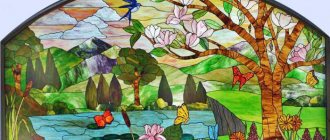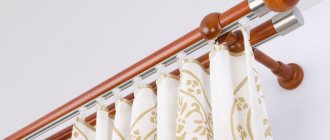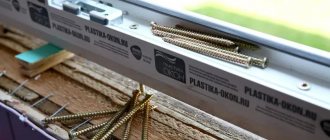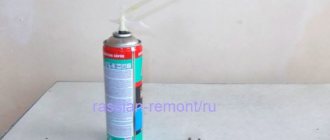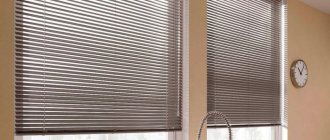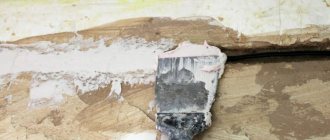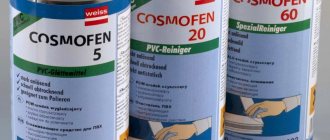Interesting ideas for stained glass
Nothing is impossible for a person with imagination.
Stained glass painting can be used anywhere there is glass or a mirror. Stained glass film is glued onto a wardrobe, window glass or door. And if you draw a composition on a file with homemade PVA paint, then the dried drawing, carefully removed, can be easily glued to any transparent surface. And it is not at all necessary to cover the entire glass area; just stick a fragment somewhere in the corner - and an ordinary thing will be transformed.
Stained glass on sliding wardrobes is a modern element with which you can decorate the interior in the most creative way.
Out-of-fashion glasses, glasses and old bottles will also not be left without attention. They make such works of art that you wouldn’t be ashamed to give them as a gift. Glass lampshades can easily be transformed into a trendy highlight of the interior.
Do you have a boring glass table in your house? Once you put a stained glass pattern on it, the house will add bright colors and warmth.
Unusual and original designer furniture with stained glass windows.
If you lack imagination and talent, you can always find diagrams and templates for stained glass on the Internet. The main thing is desire and self-confidence. Remember how in childhood you loved to look at the world through colored glass. Bring back the feeling of childhood carefreeness and a bright holiday.
Preamble
In the Middle Ages, plain glass, not to mention colored glass, was an expensive product. Even an ordinary person could not afford it, preferring to decorate their houses with wooden shutters. The stained glass window itself was religious in nature. Geometric patterns, which were seen as a representation of the perfection of God, were especially popular. And such glass greatly transformed the holy place, creating a unique atmosphere.
Today, stained glass windows are simply a beautiful decoration that can be found in any secular home. The right tools and materials, patience and desire will help you create unique colored glass yourself.
Decorative glass painting
The first drawings and ornaments that a novice artist applies to a glass surface should not be too complex. If a child is drawing, you can invite him to depict a flower, a butterfly, decorate the product with clouds and the sun, draw rain, etc.
Technique
For glass painting, similar techniques are used:
- simple contour filling;
- Tiffany - creating a continuous pattern from individual elements, each of which looks like a piece of a mosaic;
- stained glass painting - done with special paints (transparent), each part of the picture is a dark outline filled with 1 tone.
The work begins with preparing the glass. For your first experiments, you can paint a glass jar, turning it into a vase. To easily remove the label from the product, you need to soak it in warm water with detergent. The container is then washed and dried.
If a flat glass plate is used, then after removing the dust with a dry cloth, you can simply treat the surface with alcohol or vodka, glass cleaner, and wipe until dry.
Prepare for painting:
- paints and palette;
- several brushes (one for each shade);
- stick or spatula for mixing paints;
- solvent containing acetone;
- acrylic clear varnish.
The prepared base is painted in the following order:
- Using a thin brush, apply the contours of the design, placing the sketch on paper under the plate. If the Tiffany technique is chosen, small rounded contours are drawn that make up a large detail of the painting (for example, the background). The elements of the design can be whole, if they are small (petal of a small flower, etc.), their shape can be any. When all the contours are drawn, the product is left to dry for the period specified by the paint manufacturer. If a volumetric outline was used (draw it without a brush, squeezing a strip out of the tube), you need to completely dry it before painting.
- Fill the inside of the outline with paint of the desired shade. When painting in the Tiffany style, you can make 2-3 strokes in different shades of color in 1 mosaic element. This will give the drawing expressiveness and create a volume effect. For stained glass, the inside of the contour is filled with 1 shade. If you are painting an object with a shadow, make several strokes with a darker shade of the paint with which the element is filled.
- The finished product is dried and varnished. To make the design even more resistant to moisture during cleaning, the product can be heated in the oven. The glass object is placed in a cold cabinet, and then it is turned on, the temperature is brought to +150°C, it is turned off and the glass is left to cool in the oven.
Brushes
Any painting brushes are suitable for stained glass painting and other glass techniques. They perfectly display complex outlines of a drawing. But if you need to paint a large product, it is better to turn to construction brushes. Transparent varnish (as a fixing coating) is fixed with wide brushes.
What kind of pile it is, synthetic or natural, is not so important. If the paints are water- or oil-based, brushes with natural bristles will be more convenient
But in general, the choice of brushes depends on the hand of the master: what is easy in it is ideal, what is easier for a particular person to work with is what is suitable.
6.How to dilute stained glass paints if they have thickened?
Remember: if your working material has thickened, you can only dilute it with a special thinner, preferably from the same company as the paints! Why?
If you dilute water-based stained glass paints with water, they will fade after drying. The same thing happens with organic paints. White Spirit “kills” varnish-based paints.
The wrong thinner will impair adhesion to the surface, reduce UV resistance, gloss and original shade.
Purity and transparency of color are the main indicators of stained glass paints
To ensure that the finished painting does not fade or become cloudy, and that the paints do not change their composition and properties, use special thinners designed for these purposes! Every paint manufacturer has them!
Many stained glass works have been ruined when artists did not dilute thickened stained glass paints correctly.
Is it difficult to paint with stained glass paints?
In modern interiors, stained glass has become widespread as one of the options for monumental art. The word itself is of French origin. Vitre is a window surface made of glass. There are no difficulties in how to paint with stained glass paints. The process also does not require special preparation.
They paint with water-based stained glass paints using brushes, palette knives and other traditional artistic tools. In order to prevent the substance from spreading, special contours are used. To secure the image and protect it 100% from the effects of negative environmental factors, the work is varnished upon completion. In some cases, the finished drawing needs to be fired according to the parameters specified in the annotation for the product.
A characteristic feature of stained glass paints for glass is the variety of shades. Bright and rich, they are presented in ready-to-use kits and do not require the use of solvents or other substances.
How to prepare the surface?
Before applying stained glass paints to glass, mirrors or ceramics, the surface must be washed and degreased so that the paint adheres better, the adhesion to the glass is better, and... the stained glass paint does not peel off in the future.
Any detergent is suitable for washing. You can degrease it with alcohol or glass cleaner. The second option is used much more often, especially if the surface is large and flat.
You can degrease glass with glass cleaner.
Everyone knows that our skin secretes sebum, and on the palms of the hands and soles of the feet, it is produced especially intensively... By the way, this is why fingerprints are clearly visible on glass and metal. It is necessary to degrease the glass from sebum!
During operation, it is advisable not to touch the surface of the glass with your hands, so as not to leave fingerprints or palm prints. You can put, for example, a paper napkin under your hand. Very comfortably…
Types of painting
It is made on solid glass, which makes it more durable. The advantages are great creative potential, the ability to make shades and draw small details, as well as the ability to combine various objects into one composition by applying one pattern to them, and a wide range of applications.
The basis for painting can be:
- ordinary glass;
- triplex - a “pie” made of sheets of glass and film, does not produce fragments upon impact;
- bent;
- with sandblasting - matte pattern;
- satin glass - matte white surface.
In addition to choosing the right material for painting, before starting work it would be useful to study the techniques of painting with stained glass paints.
- Contour. A very popular technique that imitates typesetting stained glass. Each section of the drawing is outlined by a closed line. For large image surfaces, stained glass tape is more often used; for thinner lines, a contour from a tube is used. At the next stage, the enclosed space is filled with paint.
- Contourless. This technique is considered more difficult than the previous one and requires accuracy and patience. Its other name, “picture on glass,” expresses its essence more deeply. Thanks to fluidity, paints mix, creating new shades and fuzzy boundaries. This technique allows you to achieve a watercolor effect.
- Multilayer. It consists of layer-by-layer application of paints. Depending on what effect the artist wants to achieve, the next layer is applied to dry or wet paint to partially mix the layers. It conveys chiaroscuro and allows you to draw faces, making the works more realistic.
- Spot. The drawing consists of dots, sometimes of different sizes. Can be plain or colored. A special feature of the painting is the size of the dots and the distance between them. Moreover, depending on the density of the pattern, its saturation changes.
- Mixed. The most difficult thing to do is stained glass using paints on glass. When working on a painting, several techniques are used at once. As a rule, experienced craftsmen work there.
Contour painting technique
Its essence lies in the fact that first a contour painting is done on glass , a sketch of the work is created, and then the spaces between the contours are filled with paints, as a result of which a picture is born.
The drawing is outlined with a relief outline, preferably from the same company that makes stained glass paints. If the surface is large enough, stained glass lead tape is used, which plays the same role as the outline - it does not allow the stained glass paint to mix and strictly adhere to a certain place.
Examples of masters in stained glass painting using contour
This is a matter of your taste... If you want to make the divisions in the drawing wider and similar to those in a real stained glass window, then choose stained glass lead tape. If you want your work to be airy and light, choose a contour in a tube.
The height of the outline depends on how much paint you plan to pour onto the glass. But the denser the paint, the less transparent it is.
Tip: stained glass paint is an amazing material; you can use it to create colorful works, and not only on glass. Practice on small pieces of glass with different densities of paint on the glass using different height outlines…. Perhaps you will discover something new for yourself!
In principle, all life is built on experiments. Experiment and live life to the fullest. And as Aristotle correctly noted: “To live means to do things, not to acquire them!”
You can get your hands on stained glass painting on small glasses, plates and vases
The advantages of this technique: the ability to see a sketch of the painting before filling it with colors, a certain schematic nature that allows you to break the process into separate stages, and the characteristic “stained glass” appearance of the final work.
Watch the video story “ How you can decorate an interior with stained glass painting” using the example of a large painted stained glass window, made to order by me, and take note.
Painting dishes
Hand-painted dishes are a pearl in the kitchen, a source of special pride. Once you try painting on dishes, you can acquire a favorite hobby for the rest of your life. Two types of paints are used for painting: stained glass and acrylic. Both types are used on glass and ceramics; then you can use the finished dishes as usual.
Some tips for beginners:
- It is better to start creativity using transparent glassware or snow-white ceramics. Then nothing will distract attention from the drawing.
- First you need to “draw your hand” on a sheet of paper. Practice the hardness of your strokes, drawing out thin and thick lines, and a smooth transition from thick to thin lines. It's great if you learn the spindle stroke - this is the main way to paint flowers.
- The next step is to learn how to draw flowers. The main thing is to combine shades, to prevent one stroke from merging with others. Try making a transition from a dark shade to a light one.
- To add transparency to your drawing, wet your brush with water.
- Create a sketch of the future design, cut it out and apply it to the dishes. Professional tableware painters are so confident in their skills that they don’t use sketches, they paint straight away.
- The dishes are first washed and degreased. The contour dries completely in a couple of hours.
- Paint the picture with paints; it is better to use a horizontal plane for drying.
An acrylic picture will dry in a day, a stained glass picture will be dry in six hours. Dishes painted with stained glass paints must be fired in the oven for 40 minutes. How to create an artistic wall panel can be found in this material.
Painting on glass with acrylic master class. How to create an interesting decor for the kitchen from an ordinary jar:
Painting plates
Gzhel
If you like the combination of snow-white and blue, then you can create a whole panel of plates with Gzhel painting in blue tones.
Work process:
- A ready-made pattern or drawing is taken. The round shape of the plate encourages you to create a sketch that fits organically into the circle.
- A sketch is made on the plate with a marker.
- The main drawing is drawn using a brush with a thin tip.
- White paint paints accents on the blue drawing and makes transitions.
- Before you start painting the next element, you need to wait until the previous one dries.
Master class on painting in Gzhel style. Paint a plate beautifully - it's easy:
Khokhloma
Painting plates under Khokhloma is an interesting and exciting activity. This type of Russian art originated in the 17th century in Nizhny Novgorod.
Work process:
- An ornament is taken from a book or the Internet and transferred to a plate.
- The background is drawn, going around the leaves and berries.
- The remaining elements are filled with the desired color.
- The necessary touches are added: droplets, curls.
- The plate is drying.
Other types of Russian painting on plates:
- Petrikovskaya painting. Bright flowers, birds, and patterns are drawn on a black or gold background.
- Gorodets painting. The subject for such a painting will be a Russian hut, its inhabitants and the attributes of the life of the people. It is done with free strokes with a white or black outline.
Folk painting includes the simplest patterns, flowers, berries, natural phenomena in everything that surrounds us in nature.
- Inscriptions. On the eve of the holiday, you can display congratulations or the name of the hero of the occasion on the dishes. The inscriptions in the form of lines from a letter look beautiful. There are many options here.
- The simplest patterns: polka dots, stripes, squares, any geometric shapes look very original.
- Vanguard. There are simply no boundaries in the options here: blots, random lines, lack of symmetry.
- Ombre technique. The ombre effect is achieved by applying paint with a sponge. An ombre effect also appears if liquid streaks of paint are dispersed with a needle.
Paints for stained glass
There are special paints designed specifically for glass work. Some of them are designed for subsequent firing of the product, and some are not. To burn or not to burn? The answer to this question depends on the purpose of the product, the conditions of its subsequent operation, as well as on the technical capabilities (and it would burn, but there is no stove).
A good manufacturer will definitely provide paint tubes with dispensers that will make it convenient to apply them.
There are also special contours for stained glass. This is paint of a very thick consistency, which is applied along the borders of individual parts of the stained glass window and imitates lead seams.
We use available material: paper
You don't have to use paint to paint a stained glass window. You can decorate a window, mirror or interior glass door using colored paper. Helpful Tips:
- Tissue paper is best because it is translucent, inexpensive and easily available. But to create a realistic glass look, it's worth working with colored cellophane.
- Think in advance about how your stained glass window will look, taking into account the combination of tones and the size of the parts.
- Paper or cellophane is best applied to glue. If you are using the film specifically for window glass, then it is attached using ordinary water and careful smoothing.
- The main feature of any stained glass window is the highlighting of details with a black outline.
Painting with acrylic paints on glass: master class for beginners
When choosing acrylic paints, you should pay attention that they differ in stained glass and coating. Topcoat paints are similar to ordinary gouache, they are dense and opaque
To draw with them, the most minimal skills are required; they “forgive” the inept strokes of beginners. Most often, such paints are water-based, so they easily chip or even wash off from the finished product. To prevent this from happening, after painting the craft must be coated with a special varnish (usually water-based acrylic), securing the design
Topcoat paints are similar to ordinary gouache; they are dense and opaque. To draw with them, the most minimal skills are required; they “forgive” the inept strokes of beginners. Most often, such paints are water-based, so they easily chip or even wash off from the finished product. To prevent this from happening, after painting the craft must be coated with a special varnish (usually water-based acrylic), securing the design.
Stained glass paints.
Stained glass paints provide a transparent finish and look very beautiful on large images. To work with them, it is better to already have experience in the technique of carefully painting contours. You can find several types of stained glass paints in stores:
- ordinary - you need to wait about a day for them to dry.
- baked - to fix the image, it must be heated in the oven in accordance with the instructions
- "sticky" paints. This is more of a children's option, but it is very fun to use. To obtain an image, you need to apply it to a smooth surface, wait until it dries and then peel it off like a film. Then, using this film, you can stick it like a sticker on any surface.
What is needed for painting with acrylic paints on glass:
- acrylic paints. A set of topcoat paints of six colors will cost only 150-170 rubles, while stained glass paints are much more expensive - one jar costs about 250 rubles.
- special acrylic varnish for fixing finished images. It can be of several types: for application with a brush or for spraying from a can. The latter is more convenient, but more expensive than the first option. An ordinary 50 ml jar of liquid varnish can be bought for 160-180 rubles.
- several good brushes of different thicknesses (from No. 1 for drawing thin patterns to No. 18 for applying varnish) and shapes (round and flat). The cost of one brush is 20-35 rubles.
- palette knife - a special metal spatula for mixing paints. At the initial stage, you can do without it.
- artistic outlines, especially if you plan to work with stained glass paints.
- toothpicks and cotton swabs to correct the image in case of errors.
- palette (for starters, you can replace it with a regular disposable white plate)
- paper and pencil. They will be useful for preparing sketches of the future drawing, and it is also better to practice the first strokes on a sheet of paper before applying them to the glass.
Stained glass painting. Combination of techniques and materials. Part 1
Part 1.
Traditional use of varnish stained glass paints.
Walking around the Internet, I often come across various articles and reviews on stained glass painting and the materials used in it. These articles contain a lot of discussion about how certain materials are used. Sometimes, some statements that such and such material or such and such paint “Categorically cannot be used ...”, “This paint will definitely not lie on this surface ...” are expressed “with knowledge of the matter” and do not accept any objections. This is the Internet and a lot can be forgiven for it.....
But recently, students who studied stained glass painting from other masters in other studios or schools began to come to my classes more and more often, with the words: “But the master told me that you can’t do THIS...; This is the ONLY way...; This paint is not applied to this surface...; This paint cannot be used with these materials...; These materials and techniques cannot be combined in one job! ..."
Why am I doing all this? And after reading some articles and listening to students, I had an irresistible desire to share my knowledge about the technique and materials that I have been working with for more than 8 years. Everything I write here is based solely on my personal experience over many years. It is this information that I am happy to share with my students during my lessons at the Art-Blank studio , but, unfortunately, not everyone has the opportunity to attend my classes.
Many articles and reviews have been written on the topic of what stained glass paints exist, so I’ll dwell briefly.
All stained glass paints can be divided into several groups according to 2 characteristics:
By composition.
- Water based paints
- Alcohol based paints
- Lacquer (or solvent) based paints
According to the method of fastening to the surface.
- Fired (or fixed)
- Not fired (or not fixed)
- Transfer (popularly, paints stick)
- Baked granules
I won’t go into detail about which manufacturers are better or worse - this is purely individual for each master. As they say, it depends on the taste and color...
On the Internet you can find advice that thickened water-based paints can be diluted with water, alcohol paints with alcohol, and varnish paints with white spirit. Here I will be categorical - NO!!! As a result of such manipulations, the paint will lose its original properties. Resistance to UV rays and adhesion to the surface will deteriorate. And in the future, it will dry out even faster in the jar. "What to do?" - you ask. Every reputable manufacturer has thinners that you need to use if your paint has thickened or you want to slightly reduce the brightness of the color.
What surface are stained glass paints placed on? - For any! – only when applying it is necessary to take into account how this item will be used in the future. If you decide to paint a large object or a surface that cannot be placed in the oven with paints for firing, then after some time the paint may peel off, wash off or burn out. What to do? In this case, try covering the top of the work with varnish (if the paints are water-based) or a special fixer, which many manufacturers have. BUT! This is double work. And then, where is the guarantee that the varnish will lie like this, we want...
IT'S BETTER TO USE NON-FIXED PAINTS!
And now we come to what I think is the most interesting part. I will tell you in detail about the materials that I have been using for 8 years and would not exchange them for any other!
These are stained glass paints from Pebeo, Vitrail series. These are paints for painting glass and metal, NON-BURNING.
To begin with, a short excursion into what stained glass painting is, or as it is also called, stained glass.
The first thing you do is choose a drawing, adapt it to stained glass painting and transfer the resulting sketch in a way suitable for your surface. It is possible to convert almost any picture, even a photograph, into a sketch. The main thing is to know and take into account the basic principles of stained glass painting.
Photo sent by the customer:
Sketch:
Final result: Painting - size 50/60cm.
One more example:
Sketch:
Result: Screen
There are several main types of stained glass painting: contour, without contour, multilayer...
Let's talk about contour. The name speaks for itself - a contour is used to separate areas of the drawing. It can be either a contour from a tube or a stained glass tape, but its main principle is that all lines must be clearly closed. After this, all limited areas are filled with paint. Regarding the thickness (or height) of the line, I can say that the more paint you plan to fill, the higher the contour border should be, otherwise the paint will spill out and mix, and this will ruin all your work.
Multilayer stained glass painting and painting without a contour require certain skills, a lot of time, patience and accuracy. This is quite labor-intensive and painstaking work. These methods of stained glass painting are discussed in another article.
Now a little about the contours themselves. Like paints, they can be divided into 2 types: fired (fixed) and unfired (do not require additional fixation). I use the second one. Of all the contours that I have tried, the Pebeo . However, non-fired ones have one single, significant drawback - they do not have a rich range of colors. But their quality more than compensates for this shortcoming!
Here are their colors:
- Gilding
- Gold
- Royal gold
- Gold is dull
- Gold is bright
- Imitation Lead
- Copper
- Silver
- Black
- Transparent
- Contour with glitters
Stained glass lead tape, used for the manufacture of film stained glass windows, is also ideal as a separator. Just note that paint can spill out at the joints, so in these places the tape must be pressed very carefully against the glass.
The paints I use are Pebeo Vitrail . This is a line of non-fixing varnish stained glass paints for glass and metal. The color palette is huge, it is so diverse that your imagination will know no bounds.
Transparent paints – 26 colors, volume 45 ml. If, suddenly, this volume seems small to you, there are 16 colors in 250 ml jars.
Translucent paints – 10 colors, volume 45 ml.
Transparent and translucent colors, rich, very shiny, bright. Good light fastness. Flowable and viscous high gloss. You can only draw with them on a horizontal surface. As for painting vases, glasses and other volumetric surfaces, this is a topic for a separate discussion and requires certain skills and dexterity.
Varnish-based paints also include paints with special effects. They also do not require further fastening.
Fantasy Prism “Kaleidoscope” - 28 colors, volume 45 ml.
Fantasy Moon “Moonlight fantasies” 18 colors, volume 45 ml.
Paints with special effects are absolutely opaque, thicker and more viscous - in comparison with paints from the Vitrail .
ALL of these types of paints ( Pebeo Vitrail , Fantasy Prism Kaleidoscope and Fantasy Moon ) mix beautifully with each other, increasing your ability to invent new colors and effects a million times over.
You can apply paint in various ways - with a pipette, sticks, syringes. I use brushes. I use round Pony, Shkolnik series - I still couldn’t get used to synthetics - the sharp tip does not allow me to take out a sufficient amount of paint, even if I do it with a large number. However, if you have delicate and small work, synthetic brushes or thin wooden sticks, such as toothpicks, will be very useful here. But here, as they say, it comes down to taste and color...
To dilute thickened paint or make it more transparent, Pebeo Vitrail has 2 types of mediums: Medium Lightening, Medium Matt. Their difference from each other is that when using Medium Matt, the paint and the surface on which it is applied become matte. The more Medium Matt you add to your paint, the less gloss it will have. Everything is very simple, but when combining glossy and matte areas in one work, wonderful and unusual effects are obtained.
And now we have gradually come to what materials, techniques and on what surfaces these paints can be used. And also what effects can be created by showing a little imagination and dexterity. Here I can only say one thing: “The colors and your imagination are in your hands!”
I’ll say right away that I won’t discover anything new in some methods of applying paint and combining materials. Some methods can be found on the Internet, I modified them somewhat and made them convenient to use specifically for myself. In some ways I invented the “bicycle”. Do not judge strictly!
So, one of the main surfaces for stained glass painting is glass, fiberglass, or mirror. I won’t say anything new here, except that try using embossed glass – the effect is amazing. The paint flows into the relief and a very interesting play of color occurs. Just keep in mind that many contour lines will worsen this effect. I realized this after I drew such a butterfly.
The stained glass window was painted in 2007 - my second work, which took first place in the “Your Own Designer” competition in the “Apartment Answer” magazine
You can take transparent structural pastes and create relief in some areas of your work yourself. And then, after the paste has dried, apply stained glass paint.
When you paint stained glass, be sure to consider the transparency of the paint. When the glass is lying on a white background, the colors look very dark, some shades are almost black, but when held up to the light everything will be completely different.
Many years ago I made a stained glass window on satin glass. It has 2 sides - smooth and rough (satin). When stained glass varnish paint is applied to a rough surface, these areas become transparent. At first it scared me. "All! I ruined the order,” I thought. But then, having found a description of this effect on the Internet, I realized that this was my first “bicycle.” Subsequently, I quite often used this feature of satin glass - after all, such stained glass windows play especially beautifully in sunlight with their colors and effects.
One of my works on satin glass. Unfortunately, the customer photographed the stained glass in such a way that the effect is not visible, and my photos disappeared
About the mirror, I can say that it is a rather difficult surface to work with - your eyes get very tired, and constantly looking at your beautiful reflection begins to get boring after a while. I transfer the drawing onto the mirror using carbon paper. This method seems to me the most convenient and simple. When applying the contour, monitor its thickness very carefully. It’s difficult to explain, but after trying it a few times, you’ll understand what I’m talking about now. When you start pouring paint, keep in mind that the mirror distorts the color. Light shades become several orders of magnitude darker. Combinations of transparent and opaque paints, as well as glossy and matte elements, look very beautiful.
The works of my students in the ArtZagotovka - yes, the drawing covers almost the entire mirror surface, but it was drawn in such a way in order to understand in class all the features and complexities of such work. And painting a mirror at home so that you can look into it will not be difficult:
Gilding with gold leaf to match stained glass paint gives an unusual effect. But be sure to keep in mind that the paint will adhere to the gold leaf as if it were on a mirror surface - the color will be darkened.
These are also the works of my students in the ArtZagotovka - class “Stained Glass Key Holder”.
Pebeo Vitrail stained glass paints turned out to be so versatile in terms of application to various surfaces that four years ago I came up with the idea of trying them on wood. I liked the effect so much that I began to work and improve in this direction, calling this technique “Imitation of cloisonne enamel.” I even came up with a name for this technique - “Imitation of cloisonne enamel . After all, if you carefully draw an outline and fill it with paints of the colors that are typical for hot enamel, it turns out very similar, especially when compared with techniques with protruding partitions.
I fell in love and became infected with this technique. I started working there a lot. I became interested in the history and styles of hot cloisonne enamel. And I’ll tell you about all this, including how to correctly and effectively imitate cloisonné enamel, how to prepare a wooden surface and what effects can be achieved by using varnish paints, as well as what decorative techniques they can be combined with, in the next part of your article.
The article was written by me for the website of Anna Grigorieva’s studio ArtZagotovka .
When copying, be sure to indicate authorship and a link to the source!
What glass products can be painted?
In the design of design elements of houses and apartments, glass painting has become widespread. This is relevant in the following cases:
- When the task is to complete interior and exterior design. This is in demand when the creation of architectural ensembles and objects takes place.
- If interior and entrance doors are finished promptly.
- An operation is performed on glass structures and partitions, which will create a perfect look in the room.
- When working on mirrors, numerous wardrobes, as well as special furniture and countertops. This will ensure the creation of the appearance of the object.
- Painted glass deserves attention in the manufacture of accessories and decor. The work requires jewelry, every detail is taken into account.
Various glass products
What objects can be painted with paints?
Painting opens up unlimited possibilities for creative people who are interested in it. And the whole point is that a variety of things can act as objects for decoration. For example, since ancient times, in churches and cathedrals, stained glass paints were used to decorate the windows and ceilings of monasteries, castles, houses of rich gentlemen, libraries, etc.
In addition, today it is becoming fashionable to paint doors and glass decorative partitions, which are often used for zoning living spaces. Vases painted with stained glass paints also look original, as do paintings, glasses and glasses, dishes, candlesticks, candles, cups and mirrors, jars, flasks, etc.
Let's look at the basic techniques for high-quality glass painting
There are several basic glass painting techniques using acrylic paints: dot painting, stencil painting and hand painting with brushes. Dotted application of paints will allow you to create very fashionable images in an ethno-style.
Stencil painting is one of the simplest techniques. The greatest care is required when cutting out the template itself, especially if it contains small parts.
Finally, hand painting is an option for advanced artists. Using this technique, you can create real paintings on dishes. The photo below shows several examples.
Multilayer technique
The essence of this painting technique is clear from its name: paint is applied in several layers. Moreover, depending on what effect the artist wants to achieve, the bottom layer (or several layers) can be either completely dry or of varying degrees of dampness, so that they are mixed with the layer applied above.
This technique allows you to create the most realistic images using stained glass paints; with its help you can even convey shadows and the play of light. This technique requires a lot of attention and patience.
Water-based stained glass paints are best suited for this technique. Although, if you practice enough, you can achieve good results with varnish stained glass paints.
A short review of brands and manufacturers of organic-based stained glass paints (varnish) will help you make the right choice when purchasing.
Here, look at the example of the work of one master of stained glass painting, where you can clearly see the transitions of light and shadow on the boy’s face and on the bodies of the angels.
Examples of stained glass multilayer technique
Consistency in work and accuracy are important here... If errors appear, it will be difficult to correct them. And I repeat again - try, experiment! After all, nothing is impossible - anyone can master such a subtle technique... the main thing here is desire!
How to paint with stained glass paints?
Pouring paint and filling in the elements in stained glass painting is perhaps the most interesting part. You need to start filling each sector from the core, gradually painting the areas next to the outline. At the same time, it is not advisable to “climb” onto the contour itself, otherwise the painting will look sloppy and not so impressive.
You can start learning to paint with large flower buds
The background can be painted last. But there are other options for painted glass paintings, where the main background consists of acrylic paint and... newspaper! This decorative design of a glass picture looks harmonious in an ensemble with stained glass varnish paints!
Especially for lovers of stained glass painting, I develop and record Master classes in video format. One of these lessons may be suitable even for beginners, since it is “chewed” in detail and will be understandable to everyone. It is also ideal for those who want to enjoy a quiet lesson as Art Therapy for relaxation and calm.
How to mix stained glass paints and get new shades?
Unfortunately, not all manufacturers of stained glass paints have such a large selection of paints as the French Pebeo Vitrail, for example. Don't despair, because paints can be mixed to get the desired shade!
To obtain new colors and shades, use a special container with indentations. Although you can get by with regular plastic bottle caps and other available containers.
Old cream jars make excellent containers for mixing paints.
Start mixing with a small amount of paint... it is important to remember that dark colors are easier to create than light colors. In any case, knowledge and skills come with practice. Try mixing and creating your own interesting colors and shades!
Spot painting on glass
Again, the name of this technique also speaks for itself. The image is formed by a set of dots made by contours, and its color and saturation can be varied not only by color, but also by the density of the dots, and the shades change, including when dots of different colors are placed next to each other.
The labor intensity of painting in these techniques is approximately equal. This methodical technique is not only used on glass and ceramics. Using this technique, they decorate everything and on any surface... from covers to clothes.
Spot painting on glass and ceramics is very popular in the world and is in great demand
Do you like paintings made with stained glass paints? If you want to try to write something surprising and unusual, but don’t know how to approach this technique, don’t worry. We all started somewhere.
Painting on glass “Girl playing with a cat on the windowsill”
At one time, I recorded a master class on stained glass painting for beginners, in which I showed and told in detail, clearly and step by step how to create a stained glass picture, even if you are doing it for the first time.
Moreover, the master class is based on working with professional solvent paints, and after it you will know exactly how to paint real works. In the lesson, I used the basic contour technique, but there are moments in the picture in which non-contour and dot techniques are present. And as the ancient Greek philosopher Pythagoras said: “Give every day a chance to become the most beautiful in your life!”
So if you are interested, go and watch - the master class was recorded especially for you!
Also, if you already paint glass products, you can try your hand at a new technique - stained glass paints on canvas. You can find the lesson announcement here. This is a new direction in mixed media that is winning the love of many people.
Noteworthy video: an example of painted stained glass for a home
Friends, so that the article does not get lost among many other articles on the Internet, save it in your bookmarks. This way you can return to reading it at any time.
Is the circuit required or not?
Typically, classic painted stained glass or glass paintings have outlines. If your goal is beautiful, smooth murals, use raised paint or stained glass lead tape.
Remember: all contour lines must be closed. If there is a break somewhere in the outline, the colors will flow, mix, and this can ruin your work.
Most often they use a black outline or a tin color that imitates metal.
Unless, of course, this is a contourless technique, where the contour is not used to contain stained glass paint, but rather is of a decorative nature. In another article, you can read all about the most popular stained glass painting techniques
And of course, each manufacturer has its own contour paints in tubes of different colors. I especially like the ones that imitate silver or gold.
The golden outline looks great in subject paintings on glass
Be sure to let the relief outline dry for about 20 minutes before you start painting with stained glass paints! Take this into account! When working with stained glass paints, the sequence of actions one after another is important.
What are the advantages of stained glass painting?
The main advantage of stained glass painting, like any other decorative and applied art, is the opportunity to make an exclusive designer item yourself. Stained glass paints allow you to update your home interior and add a fresh touch to it. For example, you can use them to decorate a mirror in a hallway or bedroom, decorate glass parts of doors, paint chandelier shades, and dishes.
In addition, stained glass painting allows you to create spectacular photo frames and other products, which, if the opportunity arises, can be given to your friends and acquaintances. This is a great and original gift.
Is it possible to draw a stained glass window with a pencil?
To work, you just need to stock up on bright colored pencils, paper and an eraser. On the surface you need to draw a sketch using “broken” shapes, as if the picture was really made of soldered pieces of glass. Color the details with colored pencils. You can highlight the borders using a black marker, felt-tip pen or paint (watercolor, gouache). Also try making a frame using thick cardboard, paper and PVA glue.
Let's look at the basic techniques for high-quality glass painting
There are several basic glass painting techniques using acrylic paints: dot painting, stencil painting and hand painting with brushes. Dotted application of paints will allow you to create very fashionable images in an ethno-style.
Stencil painting is one of the simplest techniques. The greatest care is required when cutting out the template itself, especially if it contains small parts.
Finally, hand painting is an option for advanced artists. Using this technique, you can create real paintings on dishes. The photo below shows several examples.
Non-contour technology
The peculiarity of stained glass paints is that they spread strongly over the glass. If you use them without contours, you need to control this spreading and, in fact, create a picture precisely due to it.
When applied, paints not only spread, but also mix with each other, creating new shades, stains and unclear boundaries. It turns out a little like a typical watercolor, only varnished.
Here is an example of stained glass abstraction, this is a blank for continuing the painting
This technique is more difficult than the previous one and takes a long time to master. It varies greatly depending on the brand of paint and the degree of dilution, and the application itself is difficult and time-consuming.
By the way, if you have not yet decided what stained glass paints you would like to use to paint your products, then a review article on stained glass paints can help you with this.
In general, this is a technique for curious people. It is best to use varnish stained glass paints to create beautiful paintings using the non-contour technique; they open up more opportunities in the world of stained glass painting.
By the way, these two techniques can be combined. For example, inside a large element in an outline you can make a pattern in a non-outline manner. And of course, flowers turn out especially beautiful when the spreading of stained glass paints creates amazing patterns inside the flower!
In a master class on painting a glass table, I show all the nuances of such work. The photo below clearly shows how beautiful spreading is created in this way.
Fragment from a lesson on painting a table
You can purchase a video tutorial on stained glass painting a glass table Also in this lesson I additionally show the technique of gilding with gold leaf, since gilding complements this work.
As you know, hand made is a special type of creativity and it is popular all over the world, because many people like to decorate the interior with their own hands.
Types of painting materials for glass
There are several main types of coating depending on the purpose of application and the basis for production.
For stained glass
Stained glass paints are a decorative material that is abrasion-resistant and resistant to water and sunlight. Stained glass paints allow you to decorate mirror surfaces, glass vases, dishes, photo frames, etc.
Before using a set of stained glass paints with stained glass windows, it is necessary to apply an outline that will prevent the coloring composition from spreading. After drying, stained glass paints become transparent. The paint kit most often includes stained glass varnish for applying contour lines.
There are organic solvent materials and water-based paints, which differ in their area of application.
Acrylic
These water-based materials are opaque and their application is reminiscent of oil painting. For application, it is better to use a wide brush, and if the surface has a large area, then it is worth taking an acrylic composition in the form of an aerosol.
Oil based
Oil paints are opaque, so they are intended for painting matte surfaces. Before application, they must be diluted with an oil topcoat, which makes the material resistant to water with the addition of detergents. However, the coating is not heat-resistant.
Silicate based
Silicate heat-resistant glass coatings resemble watercolors, but they must be cured at temperatures between 700 and 800°C. This can be done at home in the oven, if the size of the product allows.
How to correct defects and remove stained glass paints from glass?
A novice artist almost always encounters problems when working with stained glass paints: he accidentally “blurs out” more material, paints over the outline, creates bubbles... These defects need to be corrected immediately, before the paint dries.
Bubbles, for example, can be conveniently “expelled” to the contour, or “burst” with a needle or toothpick. And excess paint can be removed with a brush or cotton swab.
Paint that has leaked beyond the contour can be removed with a clean brush dipped in solvent.
It is convenient to clean an accidentally painted outline with a brush or stick dipped in solvent or water (depending on the base of the stained glass paint). Using a solvent can completely remove stained glass paints from glass before they dry.
Selecting accessories
Once you decide to master this amazing technique, feel free to go to your nearest art supply store. The seller will recommend you everything you need for painting glass in strict accordance with the idea of the future painting and the way you will create.
There are various types of glass paints on sale for plates and bottles, dishes and windows, and glass tabletops. Not all dyes are suitable for painting objects that come into contact with food and detergents. To train a novice decorator or conduct a master class, it is absolutely not necessary to purchase expensive kits used in professional painting.
To learn how to create interesting patterns and original compositions, you can also use budget options - their aesthetic qualities are no worse. By the way, if children paint on glass with acrylic paints, then the safety and hypoallergenicity of the materials will be the highest priority selection criteria.
There are 2 main types of paints for creating paintings on glass:
Acrylic;
Stained glass.
Both are good in their own way. Packaging usually consists of easy-to-open and close jars, tubes or cans. Also, components that eliminate unpleasant odors are added to professional kits. In addition to the obvious similarities, acrylic and stained glass paints also have tangible differences. Let's take a closer look at them.
Material and tools
You can paint panels, clocks, glasses, decanters, vases, glass surfaces in kitchen cabinets, on doors and windows with your own hands. To begin, choose a simple drawing. Make a small sketch. You can use a painting you like (photo 4), glasses (photo 5), vases (photo 6). To create a stained glass composition you will need:
- working material for painting;
- stained glass paint;
- brushes (it is better to use a separate brush for each color);
- stencil or favorite design;
- acrylic outline;
- needle, cotton swabs, toothpicks;
- solvent;
- cloth napkin.
READ ON THE TOPIC:
Stained glass windows - prestige and modernity
Photo 1 – Stained glass window with a peacock
Photo 2 – Glass painting
Photo 3 – Stained glass with a sakura branch
Photo 4 – Stained glass with swallows
Progress
The work surface must be cleaned and degreased with nail polish remover, alcohol or cologne.
The picture is glued to the back of the working surface with double-sided tape or a ready-made stencil for stained glass on glass is used. Next, draw the outline of the drawing with a regular marker or cosmetic pencil.
The outlines are enhanced using a special acrylic contour. It takes 1-2 hours for it to dry completely.
Attention! The main contour must be continuous (without random gaps) so that the coloring material does not find a free opening for flow out. When the outline is dry, you can start filling the pattern with stained glass paint on the glass. This work is done using brushes or special dispensers.
This work is done using brushes or special dispensers.
When the outline is dry, you can start filling the pattern with stained glass paint on the glass. This work is done using brushes or special dispensers.
Coloring and color selection is carried out according to the proposed drawing or at the request of the master. The finished stained glass window should dry well within 1-2 days.
Depending on the subject of painting and its conditions of use, the finished stained glass masterpiece can be protected with transparent nitro varnish.
What is the best stained glass paint?
In order to paint glass surfaces with paints, there are a lot of technologies and many different paints. Glass paints (form. 7) are made with different bases:
- acrylic;
- one;
- nitro.
Photo 5 - Painting glasses Photo 6 - Artistic painting on vases Photo 7 - Stained glass paint
Photo 8 – Stencil for stained glass apple tree with apples
Water-based paints are often used in children's works. They can be used in stained glass windows “firing” in kilns. This material is environmentally friendly and has no pungent odors.
Nitro paints dry quickly and do not change color. They do not need to be burned, but consumers are put off by the smell of solvent.
Acrylic stained glass paints are considered the most acceptable painting material for glass surfaces. They differ:
- brightness and color saturation;
- absence of unpleasant odor;
- consistency, texture, additives;
- ease of operation;
- the ability to mix with each other to obtain interesting colors;
- long service life without additional firing;
- by different manufacturers;
- low prices.
You can also prepare coloring elements for stained glass windows yourself. To do this, use ordinary art paints with the addition of PVA glue.
Various stencils for stained glass on glass
In order to create a unique stained glass composition, you will need ready-made stencils for stained glass on glass. They can be printed on a printer, drawn on graph paper, Whatman paper, or cardboard. In addition, you can use a children's coloring book or any picture or leftover wallpaper. Ready-made stencil designs are also available for sale.
Pay attention to the interesting blanks in photos 8, 9. Using stencils for stained glass, unique compositions are created on glass that can enliven any design. READ ON THE TOPIC:
READ ON THE TOPIC:
Making your own stained glass on the ceiling
Conclusion
There is nothing inaccessible to a person who wants to create and create unique compositions. Making stained glass windows is a very interesting and useful activity that gives real results.
Painted bottles, vases, glasses are a good gift.
Stained glass compositions on mirrors, windows, doors, partitions are an excellent design solution when decorating kitchens, rooms, balconies, terraces, verandas...
